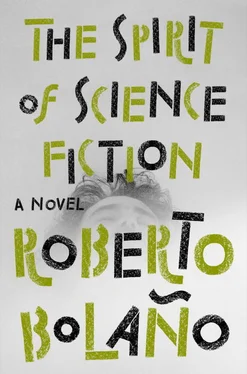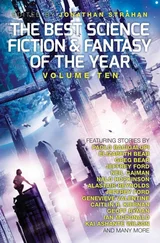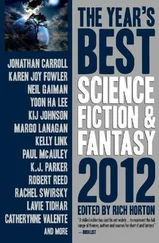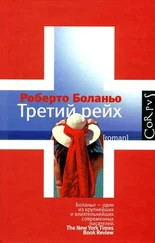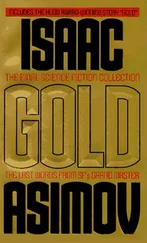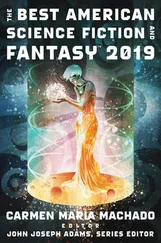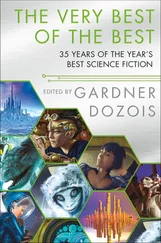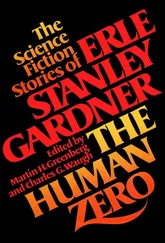“What about the girl?”
“The girl has gone down the stairs without a sound, exited the grain shed, gone home, eaten a plate of beans left for her on the table, taken off her shoes, and gotten into bed with her mother. The caretaker has eaten a hard-boiled egg, drank a cup of tea, and lain down on a mat, covering himself with a couple of vicuña blankets. Lieutenant Boris Lejeune has fallen asleep gazing up at the stars.”
“Do they dream about the Hurricane?”
“Maybe. The next morning, Lejeune is in constant motion: he has his picture taken with General Gamelin, General Giraud, General de Gaulle, General Weygand, General Blanchard, General Gort’s chief of staff, gazing out over Arras or Ypres, on the streets of Lille, Givet, Sedan, or on the banks of the Meuse and the dunes of Dunkirk. Meanwhile the caretaker follows his usual morning routine in every particular: he has a quick, frugal breakfast and gets straight to work. The girl wakes with a fever. Her dreams were about a nuclear blast, I think, a Yankee battalion wiping out Los Ángeles with a couple of neutron bombs. On the banks of the Bío-Bío is the Hurricane, and when the bombs explode, the Hurricane opens up like a giant cinema, and inside is a factory called Pompeya, where motorcycles are built. Benelli motorcycles. Soon a motorcycle emerges from the factory, and then another and another: a battalion of Komsomols from the south of Chile on its way to destroy or be destroyed by the Yankees. Then it begins to dawn on the caretaker that all the pieces of the course have almost reached Santa Bárbara, or at least they’re on their way. The girl’s mother brings down her daughter’s fever with paper-thin slices of raw potato soaked in vinegar. Boris Lejeune has himself photographed in a French tank on the outskirts of Abbeville.”
Hmm, said José Arco, a match in his hand, so that’s the guy’s signature, a triangle with a mouth in it. I lit another match. What happened to the fucking light? It’s been out for two days. Look, this is what I was telling you about. I moved a little closer. The smell of shit and urine rose from the sticky floor. This is it? Yes, said José Arco, lighting another match. I can’t see a thing. So that’s supposed to be a cave? Come closer, I’m going to light two matches; you light two and then look. In the glow of the four little tongues of flame, I saw the cross-hatched outline of a cave, some of the lines very bold, others barely visible on the white tile. In fact, it looked less like a cave than like a doughnut hacked with an ax. Inside the doughnut, it was possible to make out the silhouettes or shadows of two human beings, a dog shitting, and a mushroom cloud. Well, can you see it now? I nodded. Plain enough, isn’t it? Terrifying, I replied. The dog has three tails, did you notice? Yes, of course, he’s wagging his tail. And shitting at the same time? Of course. Shitting and wagging his tail. And what are the people doing? I don’t know, the first time I saw it, I thought that they were holding hands, but now I’m not sure. Anyway, look closer, I think they’re shadows, not bodies. The shadows from Plato’s cave? Whoa, I wouldn’t bet on that, but there’s something about the size of the mushroom cloud that makes me want to call them shadows. So they’re looking at us, and we see their shadows reflected on the wall of the cave? No, they have their backs to us, they’re looking out the mouth of the cave because on the horizon, far away, an atomic bomb has exploded. Maybe. And the dog? Why is the dog shitting in the cave? Heh-heh. Touching detail, isn’t it? No, I think he’s shitting because he’s scared, poor Rin-Tin-Tin. When they’re scared, they don’t wag their tails. I had a dog when I was a boy, and I can tell you that for a fact. I’ve never had a dog, you know? Now that I think about it, I’m pretty sure you’re the first person I ever knew who had a dog. Give me a break. Shhh, careful, someone’s coming. I closed the door to the stall. A second later, we heard the click of a switch and then the sound of liquid splashing on the urinal outside. An instant later, whoever it was zipped up and left. The matches had gone out, and I realized that I had burned my thumb and index finger. José Arco lit another match. It’s a weird signature, he said, unfazed. A triangle with a fat-lipped mouth in it, in midshout—that’s what it looks like. Probably inspired by the Stones logo, but a savage cubist version of it. Fine, I said. I saw it, now let’s get out of here. Did you examine it carefully? I don’t know, I said, this place makes me dizzy. I wonder whether it was the artist himself who made the bulb burn out, murmured José Arco. When we emerged, the lights of the café dazzled us and seemed to speed up our movements. We couldn’t help it, it was if we were dancing around the tables back to the spot where we had left our coffees.
All of these episodes José Arco dubbed “the Investigation.” Basically, we were just trying to confirm the reports from the Conasupo Cultural Weekly and Dr. Carvajal’s journal, and following any clues that cropped up along the way. Soon we were visiting all kinds of poetry workshops and we had gotten our hands on journals whose sole print runs were often no more than ten xeroxed copies. We also remained on the lookout for the graffiti—invisible art or decadent art?—described in the Weekly. Luck was clearly on our side, since it soon brought several of our working hypotheses together in one place. This place was Café La Habana, where José Arco found the Triangle with a Mouth (or Laughing Triangle) graffiti. It was an establishment already frequented by my friend in the days before the start of the Investigation, if not as assiduously. One random evening at La Habana, as he was talking to a group of friends, Estrellita asked him to buy her a coffee, and then she gave him the Weekly. Gave it to him, nobody else. Days later, after searching for her in vain along Bucareli, he found the drawing of the cave in the toilet stall. And so, over the days that followed, as we searched for Estrellita (halfheartedly, I must add), La Habana became the main headquarters of our meanderings, and then, in the most natural way, it was the place we washed up after eleven each night. We discovered that the block of Bucareli between La Habana and the Reloj Chino wasn’t just a kind of shrine—something we intuited that we should keep in mind—but that it more than satisfied all our alimentary needs: on one corner, there was a sandwich stand run by an ex–Atlante footballer, and on the other corner was La Habana, which served the cheapest and most delicious chilaquiles on the block; in between was an extremely cheap pizza counter owned by an American guy with a Mexican wife, a guy everybody called Jerry Lewis even though he looked nothing at all like the actor; across the street was a taco-and-quesadilla stand run by two dark-skinned sisters who, the minute they saw me, would say, ¿Qué pasó, güero? and I would say, but I’m not a white boy, and they would say, what do you mean you’re not, and me, stubborn, no soy güero, and so on until José Arco arrived and put an end to it: ¿Güero? Of course you are; and working both sides of the street was a gay one-eyed vendor of elotes, tender corncobs spread with butter or mayonnaise or crema and dusted with cheese or chile powder, who sagely recommended the Bucareli movie theater as the ideal place to eat his merchandise. The Bucareli theater was the king of the block, no question about it, a benevolent king, practically a paragon of virtue, host of those with nowhere to sleep, dark Disneyland, the only church that, at times, we seemed destined to belong to.
And then we found Estrellita.
José Arco pointed at a table. There she was, sitting up very straight, with two girls. The one on the left is Teresa, said my friend with a hint of bitterness. And the other one? Ah, that’s Angélica Torrente, let’s go somewhere else. What do you mean? I burst out. There’s Estrellita, we’ve been looking for her like crazy, and now we’re going to leave? Forget it! José Arco didn’t answer. As I was shaking him, I watched the three women through the window out of the corner of my eye. Estrellita was very old, and her long face was covered in wrinkles. She hadn’t taken off her coat. She was drinking something, and every so often her face turned toward one or the other of her companions, a permanent smile fixed on it. The two girls were talking and laughing and, maybe by contrast, seemed incredibly young. And smart, shielded by the same yellow light of the café that fell over them like a curtain or a dome—super smart and super pretty, I thought.
Читать дальше
